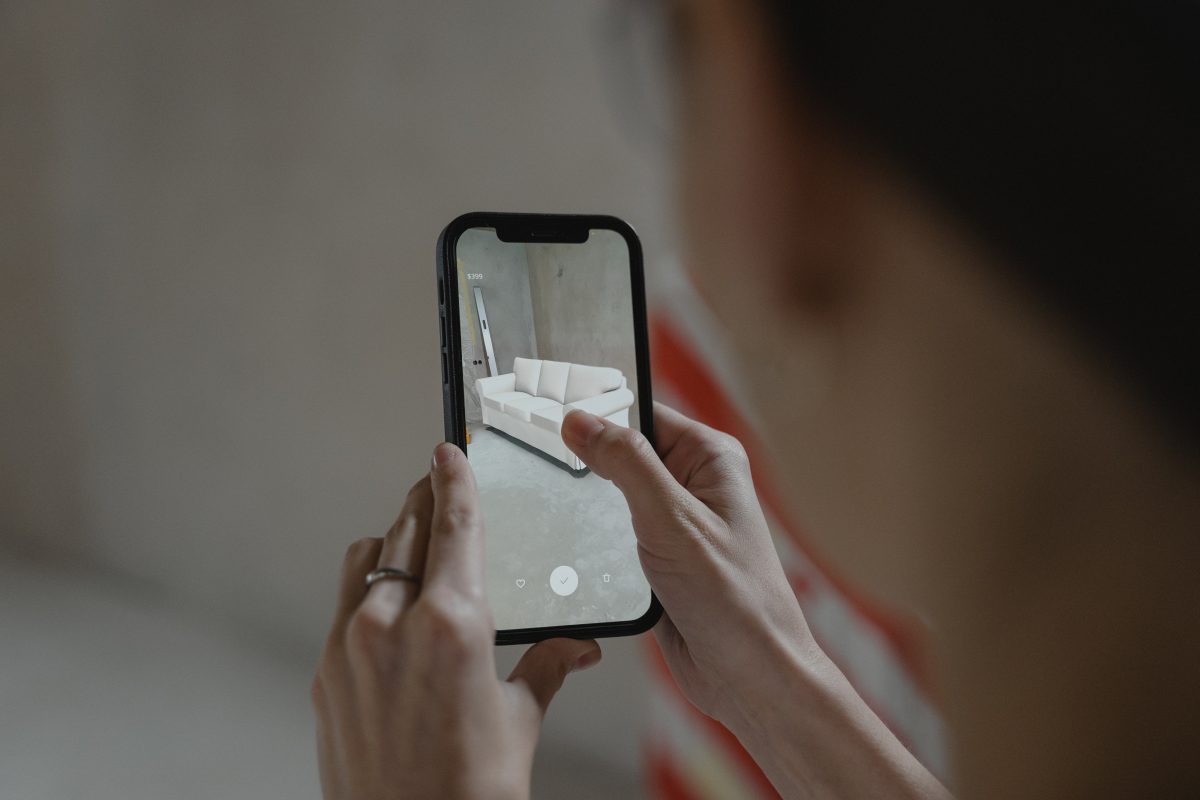Similar to trees in a forest fighting for sunlight, the advertising world is constantly battling to have the most engagement with potential customers. Experts estimate that the average person now sees between 6,000 to 10,000 ads every single day. This creates a challenge for companies to stay relevant, and stand out from all the other advertisements. How do you convince your customers? A new development around advertisements is Augmented Reality (AR).
AR Advertising is still relatively new, but bigger brands like Burger King are now adopting the technology. In essence, AR Advertising uses your smartphone to create a reality on top of your reality. It can show virtual objects when you point your camera on an AR marker. Multiple big companies have used AR technology. Jack Daniels created an app with unique AR experiences, OnePlus launched their new phone using AR technology, and Burger King launched an AR advertising campaign to battle McDonald’s. Why do these companies use AR advertising? Experts say it has multiple benefits compared to traditional advertising. It improves conversion rates, user engagement, and emotional connections with consumers.
There are some challenges to tackle. The two main challenges are reliability and the expertise that is needed to create these Augmented Reality advertisements. The technology is still relatively new and complex. The technology is rapidly evolving and will be more adapted in the future.
At this point, I believe that the technology is still in a very young phase and adoption is still minor. Both on the company and customer side. In my opinion, these examples are mostly gimmicks, since consumers will use this function maybe once or twice. They do create more engagement and brand attention, but I am hesitant about how effective these current initiatives are in the long term. It is not something customers will use daily. I do think that the initiatives are good to further develop the technology. For further adaption of AR Advertising, I think there need to be simple instances where customers use it on a daily task, it is truly helpful for them, and it does not cost them effort. An example is the Augmented Reality navigation that Google Maps has implemented. This helps consumers to navigate more easily, inside the Google Maps app. For every trip, this is useful for consumers. I personally use AR navigation in Google Maps quite often, since it is very useful to me. These types of applications of AR technology are the future and are a great example for companies that want to adapt the technology.
References
Carr, S. (2021, February 15). How Many Ads Do We See A Day? 2021 Daily Ad Exposure Revealed. Lunio. https://lunio.ai/blog/strategy/how-many-ads-do-we-see-a-day/
Chokkattu, J. (2019, August 8). How To Navigate With The AR Mode In Google Maps. Digital Trends. https://www.digitaltrends.com/mobile/how-to-use-ar-mode-google-maps/
Sokolovski, M. (2020, July 18). OnePlus Nord Launches July 21 In AR. ScreenRant. https://screenrant.com/oneplus-nord-smartphone-ar-product-launch/
Velichko, Y. (2021, October 28). AR Advertising: A Ploy or the Future of Digital Marketing? PostIndustria. https://postindustria.com/ar-advertising-a-ploy-or-the-future-of-digital-marketing-3d-models/


Hi Thomas, I didn’t even know about any applications of AR in advertising! I looked up the Burger King advertisement and it is a very interesting way of advertising. To not only passively show consumers an ad, but actively engage them to ‘participate’ in the ad. However, I do agree with you that this is still more of a gimmick and the real benefits of AR lay in the practical usage for consumers, where they actively benefit from using it.
As far as consumers are concerned, I think there is an interesting trend going on regarding the widespread implementation of LiDAR scanners in smartphones. I believe Apple includes them from the iPhone 12 Pro upwards. This massively improves AR capabilities for consumers. Nice post!
Thank you for your blog contribution Thomas! You start to see augmented reality more and more in daily life, but I did not know that Google Maps also had an AR feature. I am definitely going to use that in the future so thank you for the insight.
You mentioned that you acknowledge the technology as a gimmick, and I was wondering whether that can be seen as an advantage or disadvantage. Personally, I think that AR is more powerful when it’s only portrayed limited times, to keep it unique and surprising for its consumers. You cannot expect users to constantly scan Burger King ads at the bus stop without losing their interest in the technology. What do you think?